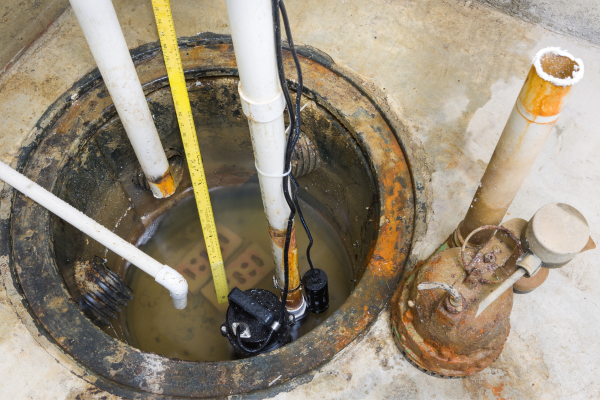One way to prevent flooding and water damage in your Houston home is to have a drainage system installed around your foundation. No matter what type of drainage system you choose for your property, the sump pump is one of the most important parts of it. Although aproper drainage system can be very effective at removing excess water, it might not do its job as efficiently without a sump pump. Now, let’s find out what a sump pump is and how it works.
What Is a Sump Pump?
Usually installed in a sump pit or catch basin, a sump pump is a type of device used to pump out any excess water that may accumulate inside. But for that to happen, thedrainage system that collects water from your property must be connected to the sump pit. In addition, the pump needs an electrical source to operate. Some sump pumps also come with a battery backup whose role is to start the pump in case of a power outage during adverse weather events, like storms and flooding.
How a Sump Pump Works
Regardless of the type of pump you decide to buy, all operate on the same principle. To begin with, all pumps are equipped with either a float activator arm or pressure sensor. When the water level in the sump pit reaches a certain threshold, the float activator arm or pressure sensor activates the pump. Once turned on, the pump starts to draw water in, simultaneously forcing it out through a discharge line. After the sump pump removes enough water from the sump pit to prevent overflowing, it turns off.
The automatic operation of sump pumps might seem like a great advantage at first. However, it can quickly become a problem if you omit to check the pump. If the pump breaks down before or during heavy rain, too much water may accumulate in the sump pit, potentially causing it to overflow and flood your home. One way to keep the pump operating properly is to have it professionally tested before the rainy season begins and periodically during the rainy months. If you have the necessary skills and tools, you can alsotest the pump yourself.
Choosing the Right Sump Pump for Your Sump Pit
Below are a few things you should consider in order to choose the most appropriate sump pump for your sump pit and drainage system.
- Types of Sump Pumps – Sump pumps are divided into 2 main categories: submersible and pedestal. As their name suggests, submersible pumps are designed to rest at the bottom of sump pits or basins, where they’re surrounded by cooling water. Submersible pumps can handle large volumes of water, so they’re ideal for larger sump pits. Similar to submersible pumps, pedestal pumps must be placed inside sump pits but not submerged in the water. Because these pumps can’t handle large volumes of water efficiently, they’re more appropriate for small, narrow sump pits.
- Horsepower (HP) – HP indicates how much power the motor produces for the pump to operate. Common motor sizes for sump pumps are 1/4 HP, 1/3 HP, 1/2 HP, 3/4 HP, and 1HP. While a higher HP generally means a higher pumping capacity, when it comes to sump pumps, bigger isn’t necessarily better. That’s because each pump has its own HP curve,total dynamic head, and recommended uses, so it’s important to check all the specifications of the pump in order to determine whether it’s the right choice for your sump pit and drainage system.
Generally, a 1/3 HP sump pump, which can handle up to 10 feet of vertical lift from the sump pit as long as it has a 90-degree elbow and there’s a horizontal discharge pipe of maximum 25 feet, would be appropriate for an average-sized house with an average water table. A 1/2 HP pump will be able to handle 35% to 40% more water than a 1/3 HP pump, which basically means it would be more appropriate for an average-sized house with an above-average water table. A 3/4 HP – 1 HP pump can handle 20% to 25% more water than a 1/2 HP pump, which makes it a better choice for a house located in a floodplain with a high water table. Because 1/2 HP, 3/4 HP, and 1 HP pumps have higher pumping capacities, they can handle higher vertical lifts and pump water through longer discharge lines. The higher the vertical lift and the longer the discharge line are, the higher the pumping capacity of the pump should be.
If you’rereplacing an existing pump that has worked properly for many years, we recommend purchasing a pump of the same type and HP. You can find the HP rating along with other relevant information on the data plate that’s usually located on the pump casing.
If you live in Houston or any other area prone to heavy rain and flooding, getting the right sump pump for your drainage system is essential for preventing costly water damage to your property. To learn more about the best ways to keep water away from your Houston home’s foundation, feel free tocontact our friendly professionals today!



